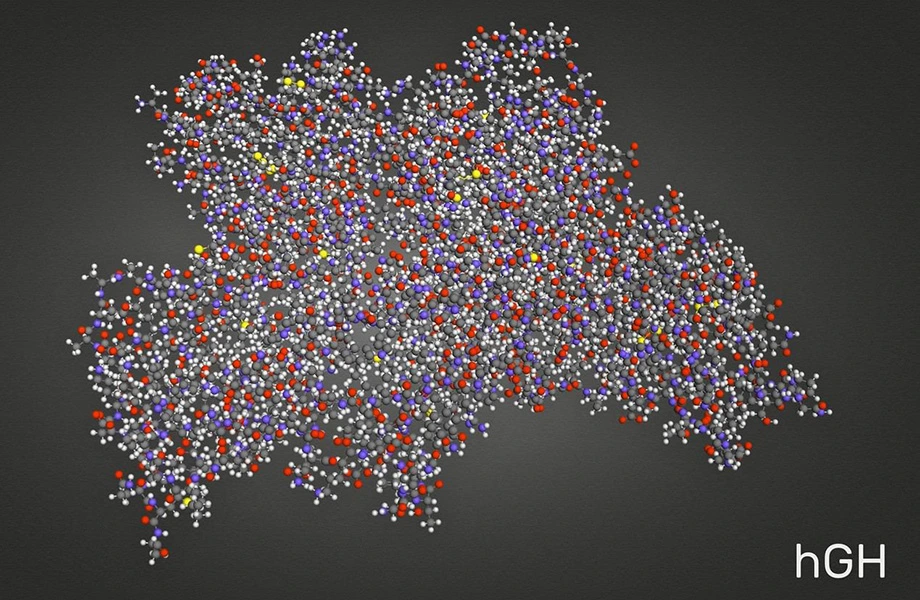What are Growth Hormone Secretagogues?
Growth Hormone secretagogues are a group of substances that induce the release of Growth Hormone. These include synthetically developed agonists of Growth Hormone/Ghrelin secretagogue hormone receptors (Ghrelin, GHRP-2, GHRP-6) and Growth Hormone-releasing hormone receptors (CJC-1295, Growth Hormone releasing hormone).
Growth hormone hormone-releasing peptides (GHRPs) are different from GHRH structurally but have been suggested by researchers to exhibit a similar function. The hypothalamus secretes Growth Hormone-Releasing Hormone. As discussed later, it appears to act on the pituitary gland and stimulate the production of Growth Hormone (GH).
GHRP is a synthetic compound that appears to work on specific receptors in the pituitary and hypothalamus. This action has the potential to increase the release of growth hormones. GHRPs may block the effect of the inhibitory hormone (Somatostatin) that prevents the production of Growth Hormone.
What is Growth Hormone Releasing Peptide (GHRP-2)?
GHRP-2 is also known as Pralmorelin or KP-102. It is a second-generation non-glycosylated hexapeptide. It is the first GHRPs to be introduced in clinical experiments. The introduction of GHRP-2 peptide may potentially increase levels of growth hormone production and release in the bloodstream. It may also act as an agonist of the Ghrelin receptors, which signal hunger to the brain.
GHRP-2 peptide is closely related to GHRP-6 and research studies suggest that both peptides may exert similar action. However, the potential of GHRP-2 peptides to increase growth hormone levels may be more potent than that of GHRP-6. A study performed on cultured pituitary cells suggests its potential to increase the portion of growth hormone to as much as tenfold in response to GHRP-2 peptide.
Mechanism of Action of GHRP-2 Peptide
GRHP-2 has been speculated to stimulate the release of Growth Hormone by a Ca+2-dependent pathway. It appears to mimic Ghrelin through its observed impact in appetite and gastric emptying. It may potentially increase growth hormone levels by a two-fold mechanism, which implies that in addition to stimulating the release of more Growth Hormone, it may inhibit the impact of Somatostatin (SRIF).
Somatostatin is a hormone that antagonizes the natural release of Growth hormone via a GHRH-mediated mechanism. GRHP-2 research studies suggest its potential to increase the secretion of growth hormone while inducing only a mild stimulatory effect on adrenocorticotrophic hormone (ACTH), Prolactin, and Cortisol levels.
Research Implications of GHRP-2 Peptide
GHRP-2 peptide has been classified as a secretagogue for Growth Hormone, which suggests it may naturally increase the production of Growth Hormone. Researchers have included GHRP-2 in numerous studies related to growth hormone-related conditions, including pituitary dwarfism, a condition classified by insufficient levels of growth hormone production at key developmental stages.
Research on the potential impact of GHRP-2 in pituitary dwarfism reached stage two of clinical trials; however, the trials were discontinued because the increase in the plasma levels of growth hormone appeared significantly lower in the subjects of growth hormone disease than control subjects. An interesting off-shoot of the study was the suggestion that GRHP-2 may hold potential as a diagnostic agent for cases of growth hormone deficiency.
Studies carried out on animal subjects have observed the following potential implications of the GHRP-2 peptide:
● Studies indicate that as an general profile, GHRP-2 peptide may encourage mytoblast (muscle cell) development, and potentially stimulate hypertrophy and hyperplasia of the myoblasts.
● Exposure to GHRP-2 has been cited in some studies to decrease inflammation in the liver.
● GHRP-2 peptide may potentially hasten repair processes in damaged tissues.
● Researchers suggest that GHRP-2 may potentially improve insulin resistance and thereby provide better glycemic control. Studies have suggested it may indirectly induce lipolysis and facilitate triglyceride breakdown, potentially impacting LDL cholesterol and instances of cardiovascular disfunction.
● GHRP-2 may contribute to the development and strengthening of tissues in the brain, lungs, and kidneys, with an ancillary impact on bone mineral density, notably in research regarding osteoporosis.
NOTE: These products are intended for laboratory research use only. This peptide is not intended for personal use. Please review and adhere to our Terms and Conditions before ordering.
